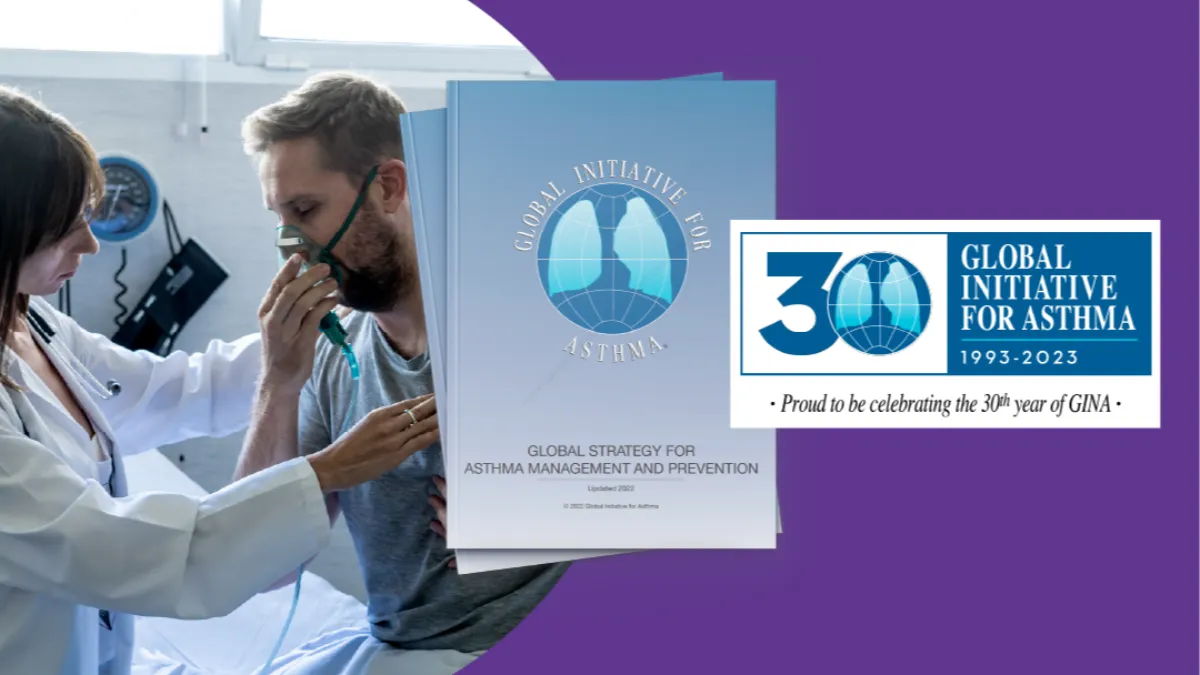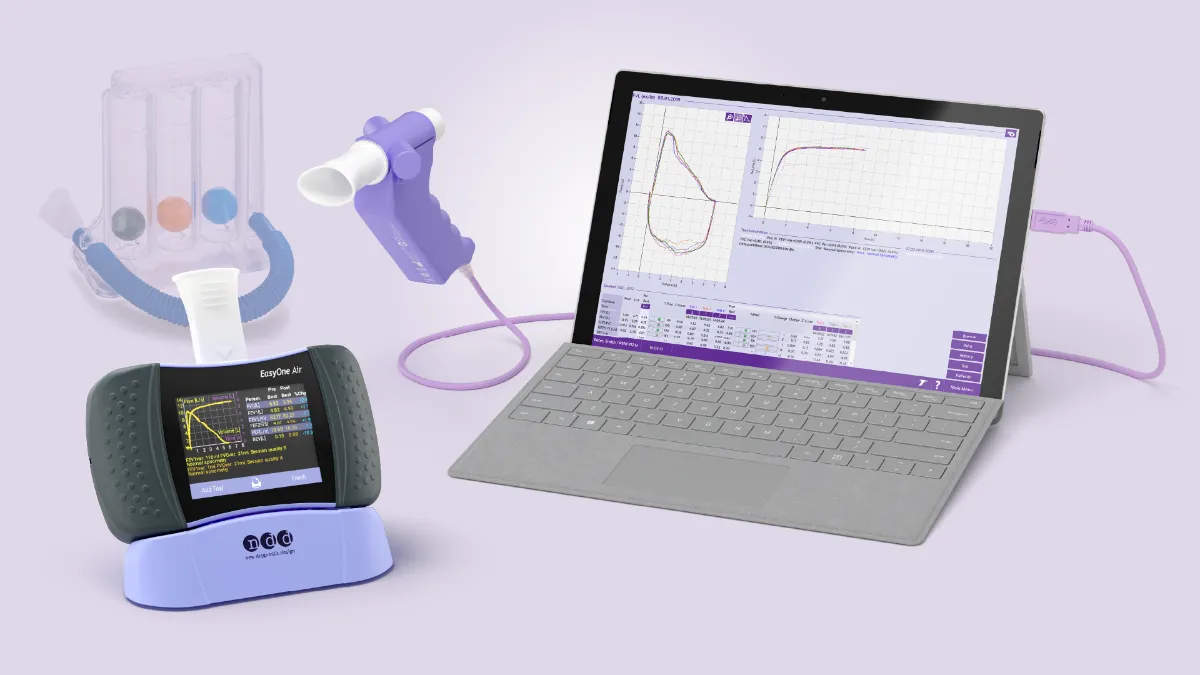Global Initiative for Asthma: Latest updates

Every year, the Global Initiative for Asthma (GINA), an international collaboration between the World Health Organization (WHO) and the National Heart, Lung, and Blood Institute (NHLBI), releases a report offering guidance to the medical field around the world for how to best diagnose and manage asthma. Year-to-year much of the report remains the same, but to keep up with the new evidence, the GINA Science Committee conducts a literature search and systematic review and grades emerging research twice a year. In 2022, there were some key changes made to GINA’s guidance, including how asthma should be diagnosed, an improved first-line approach to treating asthma, and how to characterize asthma severity.
GINA guidelines and methodology #
Before getting into the changes made to last year’s guidelines, what is GINA and how does GINA accomplish such an endeavor in issuing updated guidance to the field around the world?
For conditions like asthma, which affect people globally, it’s crucial to have as much collaboration and consistency as possible. GINA aims to be the bridge between evidence and clinical implementation.
GINA was established in 1993 as a collaborative between the WHO and the US National Institutes of Health (NIH). The stated goals were to increase awareness and to “improve asthma prevention and management through a coordinated worldwide effort.”
GINA has multiple quality control checks throughout their process to ensure their guidance is as updated and thorough as possible. These checks include a methodology developed by the American Thoracic Society (ATS) to categorize evidence (the “GRADE” methodology)1 as well as an external review prior to publication. Through these checks and GINA’s independence, the issued guidance can be considered one of the most authoritative asthma guidance documents available.
The 2022 GINA report, released in spring of 2022, had some major updates that shifted the way asthma is diagnosed and managed.
“Test before treating, wherever possible” #
“Test before treating, wherever possible,” states the 2022 GINA Report on diagnosing asthma. The crux of this guidance hinges upon emerging evidence that demonstrates one of the challenges of diagnosing asthma comes from how the therapeutics used to treat asthma actually also make it challenging to diagnose the condition after administration. This is in part because inhaled corticosteroids, a commonly used therapeutic to treat asthma, decrease symptoms, decrease variability in lung function, and decrease airway hyperreponsiveness.2
GINA’s guidance is global, which is of particular importance when considering that asthma is under-diagnosed across the world3, a point that is highlighted multiple times in the 2022 report. The GINA 2022 report even emphasizes the importance of conducting spirometry before and after bronchodilator, going so far as saying that spirometry before and after taking bronchodilator “is the most useful initial investigation.” When considering treating asthma across the world, a confirmed diagnosis is one of the most important first steps, but without an adequate diagnosis, it’s impossible to optimally care for patients. This seems to be a driving point for why GINA highlights the importance of testing before treatment and in optimizing the testing conditions.
To further hone in on the need to improve diagnostic rates of asthma in low- and middle-income countries, GINA highlights that “access to affordable diagnostic equipment and skills training [need] to be substantially scaled up” in these nations.
An improved first-line approach #
Inhaled corticosteroids (ICS) play another role in the 2022 GINA Report’s key changes. GINA documents two treatment tracks for asthma maintenance. GINA recommends the first track, as-needed inhaled corticosteroid-formoterol as the reliever, compared to the alternative, short-acting beta2-agonist (SABA). According to GINA, this approach has been “reinforced” based on emerging evidence that the ICS-formoterol approach has lower risk for exacerbation along with similar symptom control.4 Furthermore, regular use of SABA can have consequences, including promoting over-use, which can lead to increased exacerbations and mortality.5
Box 3-5A in the GINA 2022 Report depicts these two “tracks” in a stepwise manner, showing how therapies should be added over the course of a patient’s progression. GINA approaches the treatment of asthma in a personalized, cyclical manner, recommending that care providers should review a patient’s record, assess based on the available evidence, then adjust based on how things are going. GINA also updated several components of their guidance for difficult-to-treat and severe asthma.
Asthma severity descriptors are incomplete #
GINA continues to support its definitions for difficult-to-treat and severe asthma, but as part of its 2022 report (and hopefully more clarity will be included in its 2023 report), GINA proposed to host a discussion about the definition of “mild asthma.” As of the 2022 report, “mild asthma” is a term that should be “generally avoided in clinical practice” due to inconsistency in its use. A previous definition of “mild asthma” had been “well-controlled,” despite up to 30% of asthma deaths6 occurring in patients with infrequent symptoms, demonstrating that “mild asthma” implies a clinical presentation that does not match reality.
Properly defining asthma severity descriptors is important for various reasons as it would:
- improve clinical research study design and efficiency
- give doctors and researchers a better way of categorizing patients and their response to medications
- allow for cross-sectional comparisons to potentially uncover other driving factors for why some people fare better under certain conditions.
Future asthma topics and conclusion #
Updates to emphasize the importance of spirometry testing before treating, to the different “tracks” of managing asthma, and a call to better define asthma severity were just three of many changes made to the Global Initiative of Asthma’s 2022 Report. The rest of the key changes can be found here.
As this is an annual report, typically released in the first half of the year, it’s likely the GINA 2023 Report will be released in the coming weeks or months.
Schünemann, Holger J., Roman Jaeschke, Deborah J. Cook, William F. Bria, Ali A. El-Solh, Armin Ernst, Bonnie F. Fahy, et al. “An Official ATS Statement: Grading the Quality of Evidence and Strength of Recommendations in ATS Guidelines and Recommendations.” American Journal of Respiratory and Critical Care Medicine 174, no. 5 (September 2006): 605–14. https://doi.org/10.1164/rccm.200602-197ST. ↩︎
Aaron SD, Vandemheen KL, FitzGerald JM, et al. Reevaluation of diagnosis in adults with physician-diagnosed asthma. JAMA 2017; 317: 269-279. ↩︎
Aaron, Shawn D., Louis Philippe Boulet, Helen K. Reddel, and Andrea S. Gershon. “Underdiagnosis and Overdiagnosis of Asthma.” American Journal of Respiratory and Critical Care Medicine 198, no. 8 (October 15, 2018): 1012–20. https://doi.org/10.1164/rccm.201804-0682CI. ↩︎
Beasley, Richard, Pepa Bruce, Claire Houghton, and Lee Hatter. “The ICS/Formoterol Reliever Therapy Regimen in Asthma: A Review.” The Journal of Allergy and Clinical Immunology: In Practice 11, no. 3 (March 1, 2023): 762-772.e1. https://doi.org/10.1016/j.jaip.2023.01.002.
Crossingham, Iain, Sally Turner, Sanjay Ramakrishnan, Anastasia Fries, Matthew Gowell, Farhat Yasmin, Rebekah Richardson, Philip Webb, Emily O’Boyle, and Timothy Stopford Christopher Hinks. “Combination Fixed-Dose β Agonist and Steroid Inhaler as Required for Adults or Children with Mild Asthma: A Cochrane Systematic Review.” BMJ Evidence-Based Medicine 27, no. 3 (June 2022): 178–84. https://doi.org/10.1136/bmjebm-2021-111764. ↩︎
Suissa, S., P. Ernst, and W. O. Spitzer. “Beta-Agonist Use and Death from Asthma.” JAMA 271, no. 11 (March 16, 1994): 821–22.
Nwaru, Bright I., Magnus Ekström, Pål Hasvold, Fredrik Wiklund, Gunilla Telg, and Christer Janson. “Overuse of Short-Acting Β2-Agonists in Asthma Is Associated with Increased Risk of Exacerbation and Mortality: A Nationwide Cohort Study of the Global SABINA Programme.” The European Respiratory Journal 55, no. 4 (April 2020): 1901872. https://doi.org/10.1183/13993003.01872-2019. ↩︎
Dusser, D., D. Montani, P. Chanez, J. de Blic, C. Delacourt, A. Deschildre, P. Devillier, et al. “Mild Asthma: An Expert Review on Epidemiology, Clinical Characteristics and Treatment Recommendations.” Allergy 62, no. 6 (June 2007): 591–604. https://doi.org/10.1111/j.1398-9995.2007.01394.x.
Bergström, Sten-Erik, Gunnar Boman, Lars Eriksson, Hans Formgren, Tony Foucard, Lars-Gunnar Hörte, Christer Janson, Ulrike Spetz-Nyström, and Gunilla Hedlin. “Asthma Mortality among Swedish Children and Young Adults, a 10-Year Study.” Respiratory Medicine 102, no. 9 (September 2008): 1335–41. https://doi.org/10.1016/j.rmed.2008.03.020. ↩︎
Written by

Tré LaRosa
Tré LaRosa is a consultant, scientist, and writer in the Washington, DC area with extensive experience working in research (basic, translational, and clinical) and on patient-reported outcomes. He has also written extensively on neuroscience, pulmonology, and respiratory conditions, including from the patient perspective. He enjoys learning, reading, writing, spending time outdoors, and telling everybody about his mini golden retriever, Duncan.







